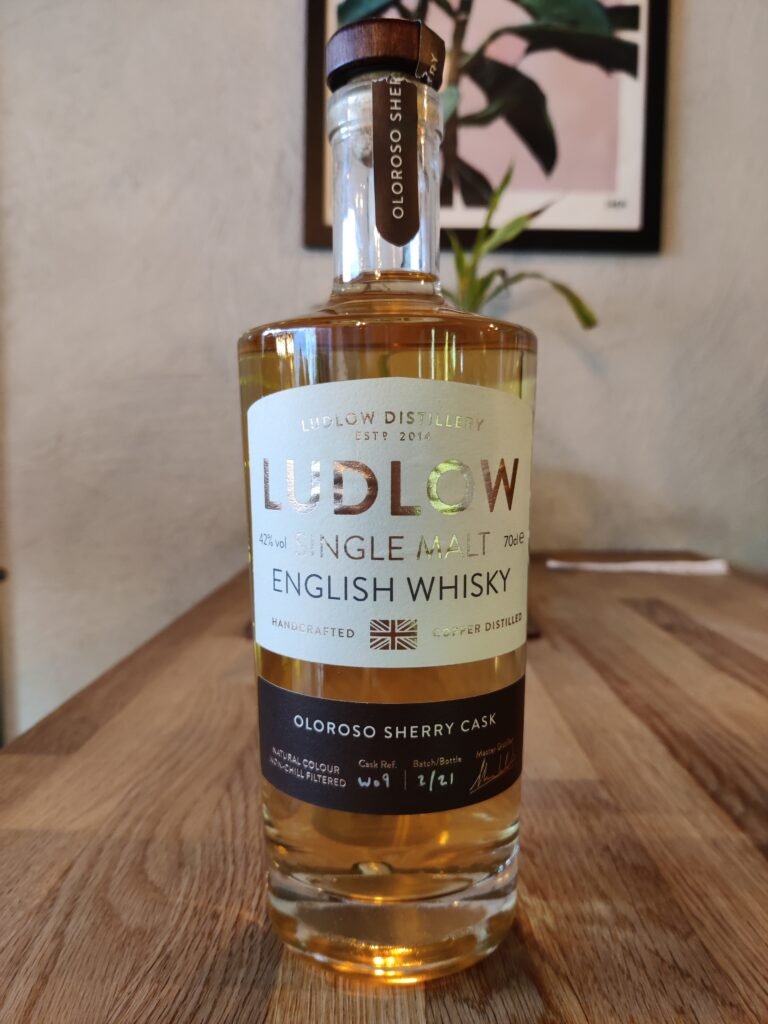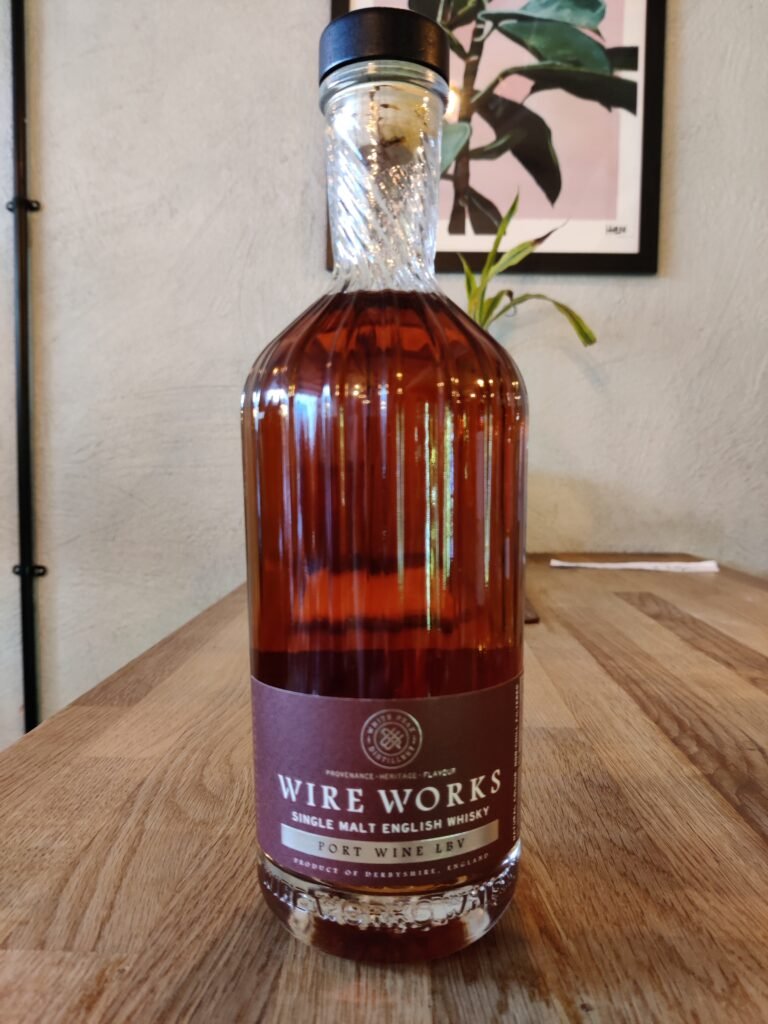A St George’s Day look around the country at what English whisky has to offer.
When: 23rd April 2025
Where: Thirsty
Host: Elliott Drinks Whisky
The English whisky industry has come quite a way in the 20 years since the planning application was accepted to build the first whisky distillery in England since the Lea Valley distillery shuttered over 100 years ago in 1903. The folks at Cooper King distillery have recently released the 7th edition of their incredible English whisky map and that can only mean that April is nearly over and St George’s Day is upon us.
On that updated map, we can see that the number of distilleries in England at any of the various stages of whisky-readiness stands at 61. In preparation for this event, poring over reviews and adverts and reflecting on my interactions at the whisky festivals I’ve attended, it occurs to me that the community of distillers and enthusiasts that make up the English whisky scene are a wonderful bunch; friendly, approachable, knowledgeable, helpful and in it together. In researching my lineup, I found I could get my questions answered when I sought more information, and even in launching this whisky club, I’ve felt supported.
More generally, wandering around somewhere like the English Whisky Festival, sampling the range of new makes, malt spirits & whiskies on offer, hearing the stories and seeing the passion they’re crafted with, it’s impossible to not be excited about the future. This tasting is planned as the first in an annual tradition – each year there’ll be more distilleries to choose from, each with an ageing and growing variety of releases. Focusing on English whisky allowed us to work with a different merchant as well to source the bottles: everything for the event was bought from Digital Distiller, an online shop and community focusing on elevating English spirits
The Whisky
(Click on the images to buy a bottle)

Pocketful of Stones – Hell’s Stone Mezcal Cask
Blended Whisky – 40%
Justification: A start representative of a start
Located in Penzance, Cornwall, since 2016, the Pocketful of Stones distillery was founded by friends with a wealth of experience. Collected in London after lives around the world, and gravitating around The Lukin pub they were each very familiar with the ins and outs of spirits; it became time to make some themselves.
Starting with gin, and moving onto whisky in 2018, they also release vodka, rum, cider brandy, absinthe and even age mezcal in from their base in Cornwall. Their whisky is distilled in their handmade still, Jackson, from wash made at local breweries.
While there are some single cask, single malt bottlings out there, most of what they’ve been selling so far is blended whisky, containing their Cornish spirit, all under the brand name of Hell’s Stone. The Mezcal cask edition we enjoyed spent a 9 month finishing period in those eponymous casks (presumably one they’d been ageing that imported agave spirit in) and was a blend comprised of their 3yo single malt and some 8yo Loch Lomond whisky (at 70:30 ratio of grain to malt)
Notes: fragrant nose with some brown sugar. After some time, agave earth and syrup appear, but it’s dry and buttery. Grain whisky and cereal notes noticeable with water.

Abingdon Distillery – Wild Oxen Maple Cask Rum
English Rum – 42%
Justification: Curveball
Abingdon (one of the towns jockeying for the title of oldest inhabited UK town) lies south of Oxford and is another example of a gin-first distillery. Their whisky is due in 2026, so they were a prime candidate for me to throw into the lineup as a curveball, with a bottle of rum.
Both their whisky and their rum is fermented in an open-top washback which is slightly unusual. Also unusual is the base for their rum: a form of dried cane juice, called panela. It is a form closer to fresh sugar cane juice rather than the processed molasses used in a lot of rums.
Whenever I see a maple syrup cask finish, I want it. My hope was that I could fool my audience with this sugary oak-aged spirit for a little while, and indeed, no one called me out on it not being whisky until they were pressed. In the coming years, I will try to get an Abingdon whisky in this lineup.
Notes: Maple syrup! Banana ice cream, vanilla, an odd citrus note. With water, some rum-rubber, cask char and a bitterness.



Fielden – Rye
English Rye whisky – 48%
Justification: Heritage & revolutionary rye
Rather than write about the controversy around their rebrand-timed retreat from Oxford up to Yorkshire and current lack of distillery, let’s focus on the fantastic story of their grains.
In 1994, an archaeobiologist (whom the original founder of the Oxford-based iteration of the brand met some years after that) discovered around 200 fairly well preserved wheat & rye grains in the lower layers of some 14th-16th century thatched roofs. Over 15 years, he built up the meagre number of seeds he’d salvaged to farming levels that could sustain a whisky distillery. On top of the revived heritage grains, these farms also practice restorative sustainable techniques, mixing grains and plains in a field to reduce the impact that farming has on the land.
All of this combines into the whiskies that Fielden release, reflecting working with grains that haven’t been used in hundreds of years. Their whiskies feature mashbills of rye, barley and wheat and this expression in particular, their core, has been aged in a wide array of woods: virgin & refill American oak, plus Sauternes, Moscatel & Maderia casks. Lots of structured flavour complementing the already characterful spirit.
Notes: Bready & spicy. Sweet & grapey. Jammy berries & ginger beer. Some must and honeycomb.

Ludlow Distillery – Oloroso Cask
English single malt whisky – 42%
Justification: A touch of smoke
From what I can gather, Ludlow Distillery is the merging of 2 great Ludlow talents, one making gin and one making whisky. Using a German-made hybrid pot/column still, their whiskies have been on the market since 2021, though the still had been in use since 2012, before said merging and combined rebranding.
All of their whisky is a marriage of English malt and Scottish peated malt, though only a little of the latter, so the resulting smoke is always a subtle note. It’s a relatively unusual combination too, peat and a (hybrid) column still. Each batch is truly small, with the first selling out in 3 minutes and 8 seconds! This bottle is from their second batch of oloroso cask, and having already been blown away by it at the Croydon whisky festival this year, I knew it would occupy this slot well.
Notes: Soft earthy citrus, touch of ash given some time. Alcohol pepper. Salty shortcrust pastry. A bit of balloon rubber.



White Peak – Wire Works Port Wine LBV
English single malt whisky – 53.3%
Justification: Premium feel
For the team behind White Peak distillery, whisky was always the dream. Setting up shop in a 120 year old former wire works (hence the brand name), they’ve plenty of history to draw on. The twisted-wire glass bottles, the cork/neck label containing the old business’ latin motto, the cooling utility of the River Derwent.
The typical Wire Works character is another that is lightly peated. They use an 80:20 ratio of unpeated to peated malt, making use of English and Derbyshire barley where they can. The yeast they use is a blend of local brewers’ yeasts, and as they gradually fill their warehouse, there are plenty of experiments going on. The most recent (released just after the bottle featured here), adopts the cognac process of ‘small waters’ – bringing the whisky down to bottling strength with a weaker oak aged spirit, rather than water.
But this bottle, is from a set of casks that previously held port. That is always a wonderful prospect for a whisky, but it’s been taken one step further here. The casks used were from a late bottled vintage: they had aged their port contents for longer than usual, imparting even more of those delicious, rich fruit characteristics.
Notes: Finish has a good frazzle, bbq note. Red berries, grapefruit, meaty (pepperoni?), drying, peppery.

The English Whisky Company – Triple distilled peated
Single cask, English single malt whisky – 49.8%
Justification: Peat heft, where the story started
Opening in 2006, releasing their first whisky in 2009, The English Distillery (formerly St George’s Distillery) are the people who ushered in this new wave of English whisky. Family owned, with son Andrew taking over from James Nelstrop in 2023, they won the coveted Best Single Malt Whisky title at the World Whiskies Awards 2024 with their Sherry cask core bottling.
With time on their side, they now have a wide range of casks and mashbills maturing in their warehouses, regularly releasing new expressions, both peated and unpeated. Currently, with their malting partners, they are experimenting with Northumberland peat, but it’ll be a few years till we can enjoy the fruits of that labour. For now, we have a bottle of their triple distilled, fairly heavily peated (60ppm), single (refill bourbon) cask, which matured for over 10 years, yielding just 204 bottles. Special stuff.
Notes: Good earthy, biscuity smoke. Worcestershire sauce & anchovies. Marshmallows, and the sensation of an earthy, open grain field.

The Winners
Vote Winner: Bottle #5 – Wire Works
Close Contender: Bottle #6 – The English
Finding a clear winner in the Wire Works port cask almost seemed to be in the bag for them when the glasses arrived, with that deep red spirit immediately demanding attention. But it was definitely backed up by a whisky with a competent premium feel to it. The triple distilled English Whisky Co. runner up delivered more of a smoke hit for those looking for it, but also in a more mature package. For me, the Fielden bottle was also full of life and things to think about, but I am partial to a rye.
Not a bad bottle in the bunch, all playing their role, all helping inform on what English whisky is capable of and building too. Having been around the whisky festival circuit a little bit, and tried many more bottles than I could fit in (or even obtain) here, I know there is more greatness to come, both from these distilleries and others.


